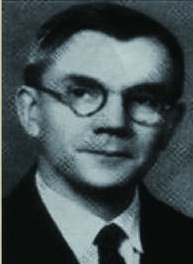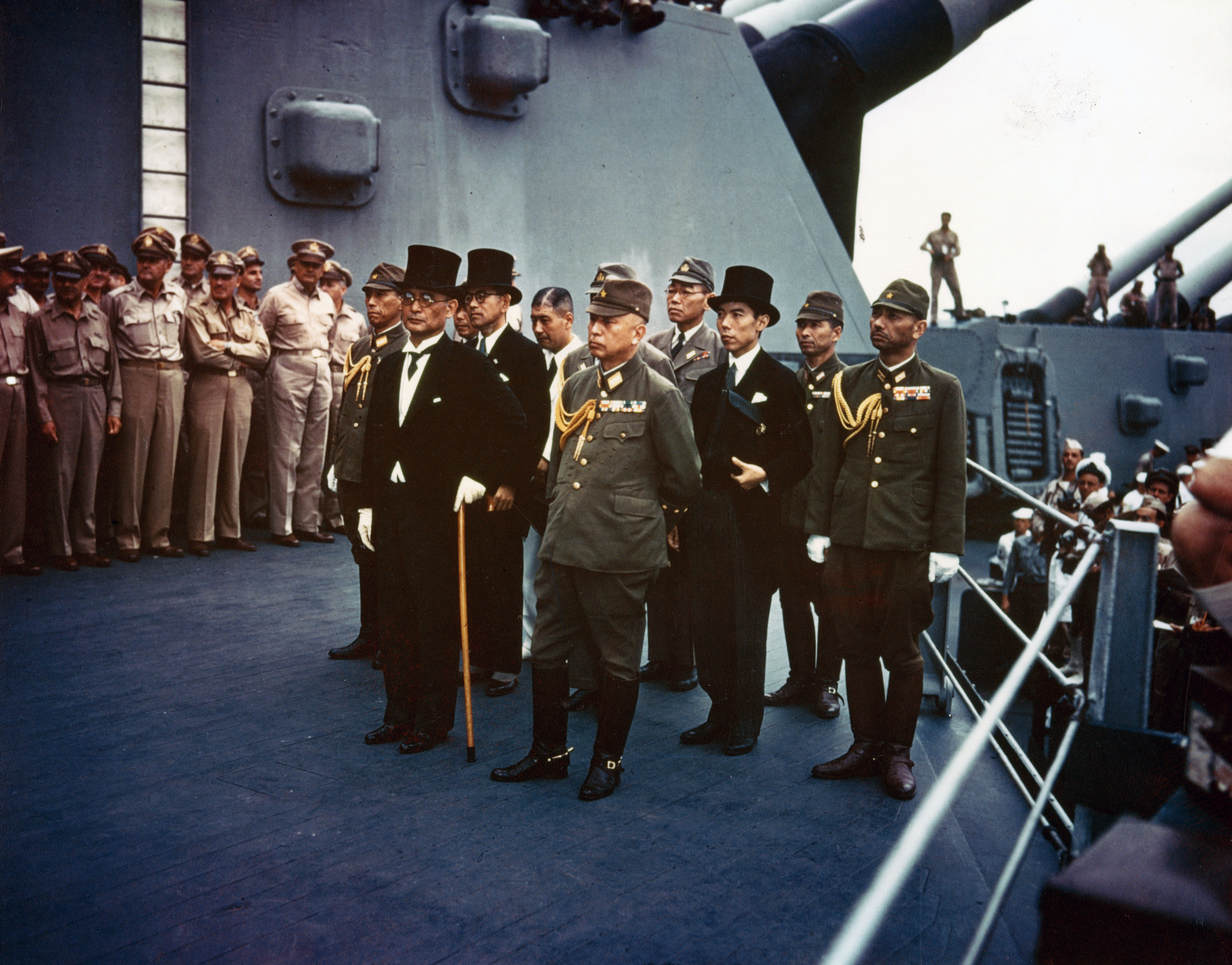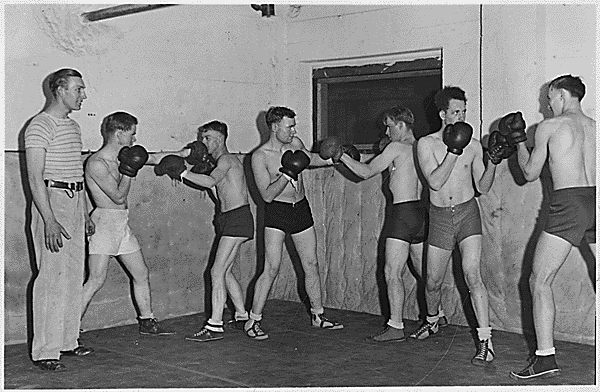|
The International Committee For Nanking Safety Zone
The International Committee was established in 1937 order to establish and manage the Nanking Safety Zone. Many Westerners were living in the city at that time, conducting trade or on missionary trips. As the Imperial Japanese Army began to approach Nanjing (also known as Nanking), most of them fled the city. A small number of Western businessmen, journalists and missionaries, however, chose to remain behind. The missionaries were primarily Americans from the Episcopal, Disciples of Christ, Presbyterian, and Methodist churches. To coordinate their efforts, the Westerners formed a committee: the International Committee for the Nanking Safety Zone. German businessman John Rabe was elected as its leader, partly because of his status as a member of the Nazi party, and the existence of the German–Japanese bilateral Anti-Comintern Pact. Rabe and other refugees from foreign countries tried to protect the civilians from being killed by the Japanese. The Japanese army did not complet ... [...More Info...] [...Related Items...] OR: [Wikipedia] [Google] [Baidu] |
International Committee For Nanking Safety Zone
The International Committee was established in 1937 order to establish and manage the Nanking Safety Zone. Many Westerners were living in the city at that time, conducting trade or on missionary trips. As the Imperial Japanese Army began to approach Nanjing (also known as Nanking), most of them fled the city. A small number of Western businessmen, journalists and missionaries, however, chose to remain behind. The missionaries were primarily Americans from the Episcopal, Disciples of Christ, Presbyterian, and Methodist churches. To coordinate their efforts, the Westerners formed a committee: the International Committee for the Nanking Safety Zone. German businessman John Rabe was elected as its leader, partly because of his status as a member of the Nazi party, and the existence of the German–Japanese bilateral Anti-Comintern Pact. Rabe and other refugees from foreign countries tried to protect the civilians from being killed by the Japanese. The Japanese army did not complete ... [...More Info...] [...Related Items...] OR: [Wikipedia] [Google] [Baidu] |
Miner Searle Bates
Miner Searle Bates (Chinese name: Bei Deshi , 贝德士) (born 1897, Newark, Ohio; died 1978, New York) was educated at numerous prestigious institutions such as the University of Oxford, where he was a Rhodes Scholar; Yale University, where he earned a Ph.D. in Chinese history; and Hiram College, in Ohio. He worked with YMCA in India and Mesopotamia (then part of the Ottoman Empire) before finally beginning work at the University of Nanking sponsored by American churches, where he taught history from 1920-1950. In 1950, shortly after the Chinese Communist Revolution, the University of Nanking was merged with Nanjing University and Bates returned to the United States and was appointed Professor of Missions at Union Theological Seminary, where he taught until 1965. He wrote ''Religious Liberty: An Inquiry'' (1945), a study of religious freedoms and persecution across the globe. Nanking Massacre In the summer of 1937, Bates travelled with his family to Japan, returning to Nanjing a ... [...More Info...] [...Related Items...] OR: [Wikipedia] [Google] [Baidu] |
Kempeitai
The , also known as Kempeitai, was the military police arm of the Imperial Japanese Army from 1881 to 1945 that also served as a secret police force. In addition, in Japanese-occupied territories, the Kenpeitai arrested or killed those suspected of being anti-Japanese. While institutionally part of the army, the Kenpeitai also discharged military police functions for the Imperial Japanese Navy under the direction of the Admiralty Minister (although the IJN had its own much smaller Tokkeitai), those of the executive police under the direction of the Home Minister and those of the judicial police under the direction of the Justice Minister. A member of the Kenpeitai corps was called a ''kenpei'' (憲兵). History The Kenpeitai was established in 1881 by a decree called the , figuratively "articles concerning gendarmes". Its model was the National Gendarmerie of France. Details of the Kenpeitai's military, executive, and judicial police functions were defined by the '' ... [...More Info...] [...Related Items...] OR: [Wikipedia] [Google] [Baidu] |
Katsuo Okazaki
was a Japanese sportsman, diplomat and political figure. He served as the Japanese foreign minister in the 1950s. He was also the final – and only Japanese – chairman of the Shanghai Municipal Council. Early life Okazaki was born on 10 July 1897 in Kanagawa, Japan. He was the 10th son of Yasunosuke Okazaki. He studied law at the University of Tokyo and then joined the Japanese Ministry of Foreign Affairs.Obituary, New York Times, Oct 12, 1965, p47 Sporting prowess Okazaki participated in the 1924 Paris Olympic Summer Games, qualifying for the 5,000 m final with a time of 15.22.2e. In the final, he fainted in the heatwave and was carried away by medics. He had much success at the Far Eastern Championship Games, winning the mile run at the 1921 Games then doing a middle-distance double in the mile and 880 yards at the 1923 event in Osaka. References , - , - , - , - , - {{DEFAULTSORT:Okazaki, Katsuo 1897 births 1965 deaths Sports ... [...More Info...] [...Related Items...] OR: [Wikipedia] [Google] [Baidu] |
Ginling College
Ginling College (), also known by its pinyin romanization as Jinling College or Jinling Women's College, is a women's college of Nanjing Normal University in Nanjing, China. It offers both bachelor's and master's degrees. It offers six undergraduate majors: applied English, accounting, financial management, labor and social welfare, food science and engineering, and food quality and safety. Master's degrees are offered in food science, agricultural products processing, and storage, and women's education. Ginling College traces its roots to the Christian college of the same name founded in 1913, which started operations in 1915 and was the first institution to grant bachelor's degrees to female students in China. The school was closed from 1951 to 1987, when it was reestablished on its previous site. American architect and art historian Talbot Hamlin designed some of the buildings that were constructed in the 1919 to 1925 period. Wu Yi-Fang, who was one of Ginling's first ... [...More Info...] [...Related Items...] OR: [Wikipedia] [Google] [Baidu] |
Minnie Vautrin
Wilhelmina "Minnie" Vautrin (September 27, 1886 – May 14, 1941) was an American missionary, diarist, educator and president of Ginling College. She was a Christian missionary in China for 28 years. She is known for the care and protection of at least 10,000 Chinese refugees during the Nanking Massacre in China, at times even challenging the Japanese authorities for documents in an attempt to protect the civilians staying at her college. After persisting in the Nanking Safety Zone from 1937, she returned to the United States on May 1940. One year later, she sealed her house tightly, turned on the gas and committed suicide in America due to extreme stress and trauma from the Nanjing Massacre. Vautrin was awarded the Emblem of the Blue Jade by the Chinese government for her humanitarian work during the Nanjing Massacre. Biography Wilhelmina Vautrin was born in Secor, Illinois on September 27, 1886, to Pauline (née Lohr) and Edmond Louis Vautrin. Her father Edmond, a French imm ... [...More Info...] [...Related Items...] OR: [Wikipedia] [Google] [Baidu] |
Nanjing University Hospital
Nanjing University Medical School (NUMS or sometimes NMS, Chinese:南京大學醫學院, Hanyu Pinyin: Nánjīng Dàxué Yīxuéyuàn, colloquially 南大醫學院, Nándà Yīxuéyuàn), the Medical School of Nanjing University, is one of the major practical and professional schools of Nanjing University. The division of basic medicine is located in Xianlin campus, and division of clinical medicine in Gulou campus which is located in the centre of Nanjing. Different from most current other university medical schools in mainland China, it is not a merge of a medical university, and it is relatively small. History Nanjing University has years of history in medical education and research or related to medical service. The first public school of medicine, the imperial central Medical School (醫學), was established in Nanking by Chin Chung Tsu (秦承祖), in the 20th year of Yuanjia reign of Song of Southern dynasties (CE 443), and when other specialized imperial school ... [...More Info...] [...Related Items...] OR: [Wikipedia] [Google] [Baidu] |
Robert O
The name Robert is an ancient Germanic given name, from Proto-Germanic "fame" and "bright" (''Hrōþiberhtaz''). Compare Old Dutch ''Robrecht'' and Old High German ''Hrodebert'' (a compound of '' Hruod'' ( non, Hróðr) "fame, glory, honour, praise, renown" and ''berht'' "bright, light, shining"). It is the second most frequently used given name of ancient Germanic origin. It is also in use as a surname. Another commonly used form of the name is Rupert. After becoming widely used in Continental Europe it entered England in its Old French form ''Robert'', where an Old English cognate form (''Hrēodbēorht'', ''Hrodberht'', ''Hrēodbēorð'', ''Hrœdbœrð'', ''Hrœdberð'', ''Hrōðberχtŕ'') had existed before the Norman Conquest. The feminine version is Roberta. The Italian, Portuguese, and Spanish form is Roberto. Robert is also a common name in many Germanic languages, including English, German, Dutch, Norwegian, Swedish, Scots, Danish, and Icelandic. It can be ... [...More Info...] [...Related Items...] OR: [Wikipedia] [Google] [Baidu] |
International Red Cross Committee Of Nanking
During the Japanese-led Nanjing Massacre, the International Red Cross established a contingent in the city to coordinate the humanitarian aid effort. Members Activities Below is listed their responsibilities, and/or their mini-biographies if known and not already linked above: John Magee John Magee was an Episcopalian minister and the Red Cross chairman of the Nanking Branch. In his role with the Red Cross, he provided care to the hospitalized wounded, but is also known for filming what he saw on the streets of Nanking, providing documentary evidence to the world. Minnie Vautrin Through Minnie Vautrin's efforts, Ginling Girls College became a haven of refuge, at times harboring up to 10,000 women in a college designed to support between 200 and 300. With only her wits and the use of an American flag, Vautrin was able to repel incursions into her college and thereby protected thousands of Chinese women from being raped as she oversaw the refugee camp at Ginling Women's Arts a ... [...More Info...] [...Related Items...] OR: [Wikipedia] [Google] [Baidu] |
YMCA
YMCA, sometimes regionally called the Y, is a worldwide youth organization based in Geneva, Switzerland, with more than 64 million beneficiaries in 120 countries. It was founded on 6 June 1844 by George Williams (philanthropist), George Williams in London, originally as the Young Men's Christian Association, and aims to put Christian values into practice by developing a healthy "body, mind, and spirit". From its inception, it grew rapidly and ultimately became a worldwide movement founded on the principles of muscular Christianity. Local YMCAs deliver projects and services focused on youth development through a wide variety of youth activities, including providing athletic facilities, holding classes for a wide variety of skills, promoting Christianity, and humanitarian work. YMCA is a non-governmental federation, with each independent local YMCA affiliated with its national organization. The national organizations, in turn, are part of both an Area Alliance (Europe, A ... [...More Info...] [...Related Items...] OR: [Wikipedia] [Google] [Baidu] |
George Ashmore Fitch
George Ashmore Fitch (1883–1979) was an American Protestant missionary in China, YMCA, Nanking Safety Zone International Committee Administrative Director, and the grandfather of politician George B. Fitch. Fitch was born in Suzhou, China, the son of Presbyterian missionaries George F. and Mary (McLellan) Fitch. He graduated from the College of Wooster, Ohio, in 1906, and Union Theological Seminary in New York with a Bachelor of Divinity in 1909. He was ordained in the Presbyterian Church in 1909 and went to China to work with YMCA in Shanghai. Nanking Massacre When the Nanking Massacre occurred in 1937–1938, Fitch, who was head of YMCA there, served as director of the International Committee for the Nanking Safety Zone. He compiled a diary and filmed some of the atrocities committed by the Imperial Japanese Army in Nanking in December 1937. December 24, 1937 Writing later in his autobiography, Fitch said, "My story created a sensation in Shanghai, for it was the first ... [...More Info...] [...Related Items...] OR: [Wikipedia] [Google] [Baidu] |
Lewis S
Lewis may refer to: Names * Lewis (given name), including a list of people with the given name * Lewis (surname), including a list of people with the surname Music * Lewis (musician), Canadian singer * " Lewis (Mistreated)", a song by Radiohead from ''My Iron Lung'' Places * Lewis (crater), a crater on the far side of the Moon * Isle of Lewis, the northern part of Lewis and Harris, Western Isles, Scotland United States * Lewis, Colorado * Lewis, Indiana * Lewis, Iowa * Lewis, Kansas * Lewis Wharf, Boston, Massachusetts * Lewis, Missouri * Lewis, Essex County, New York * Lewis, Lewis County, New York * Lewis, North Carolina * Lewis, Vermont * Lewis, Wisconsin Ships * USS ''Lewis'' (1861), a sailing ship * USS ''Lewis'' (DE-535), a destroyer escort in commission from 1944 to 1946 Science * Lewis structure, a diagram of a molecule that shows the bonding between the atoms * Lewis acids and bases * Lewis antigen system, a human blood group system * Lewis number, a d ... [...More Info...] [...Related Items...] OR: [Wikipedia] [Google] [Baidu] |



